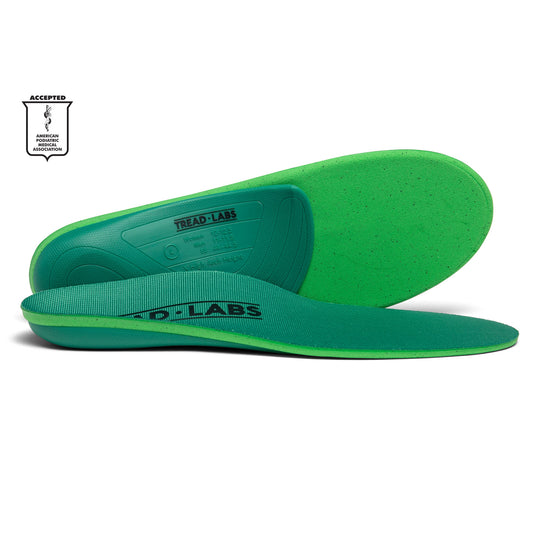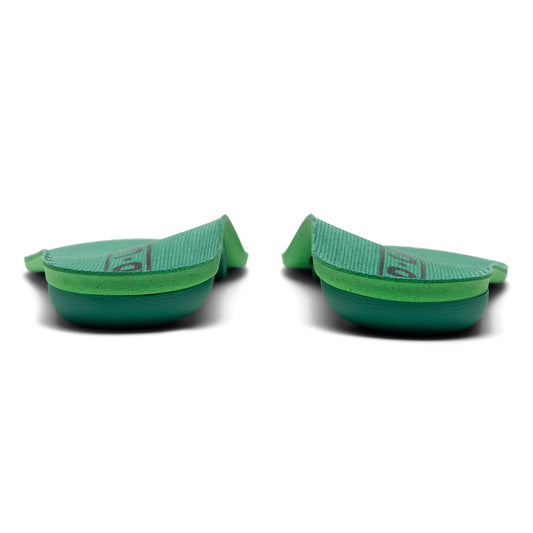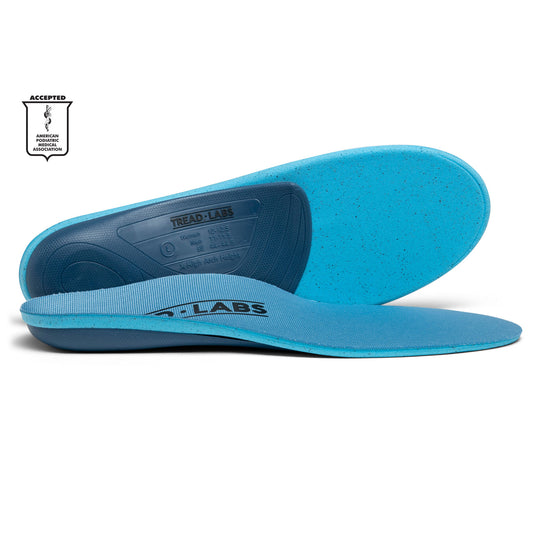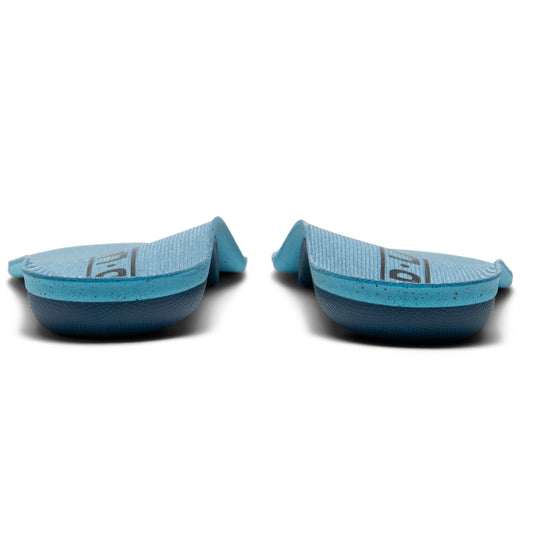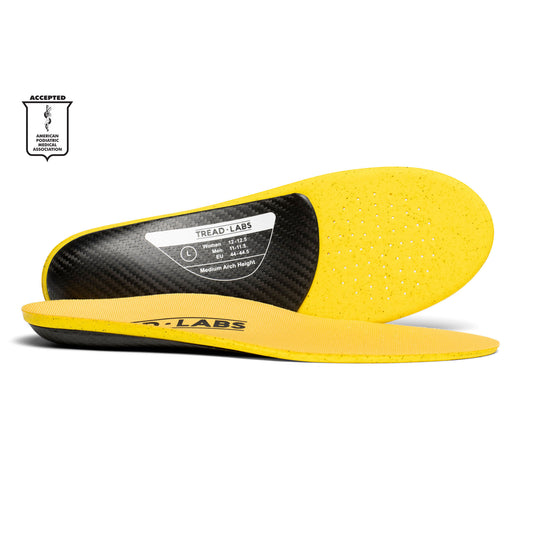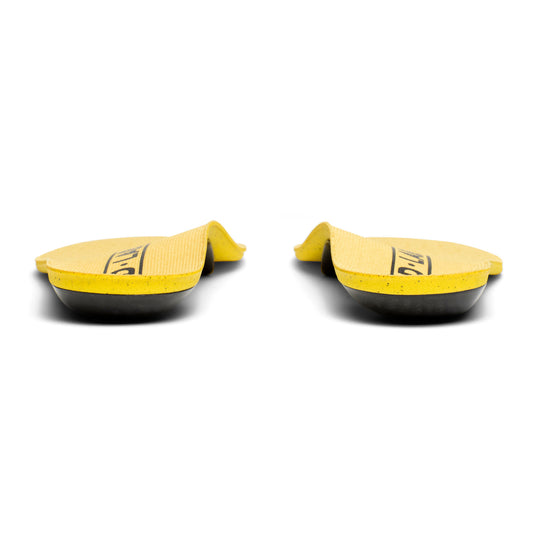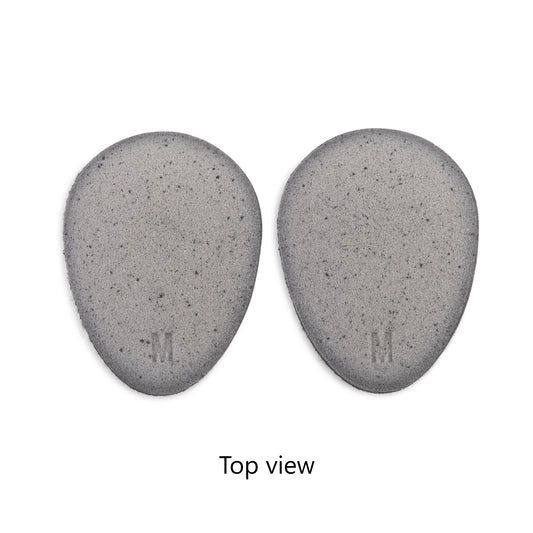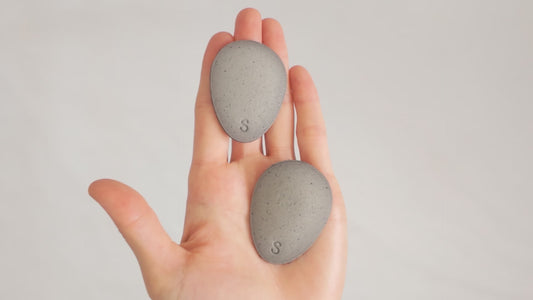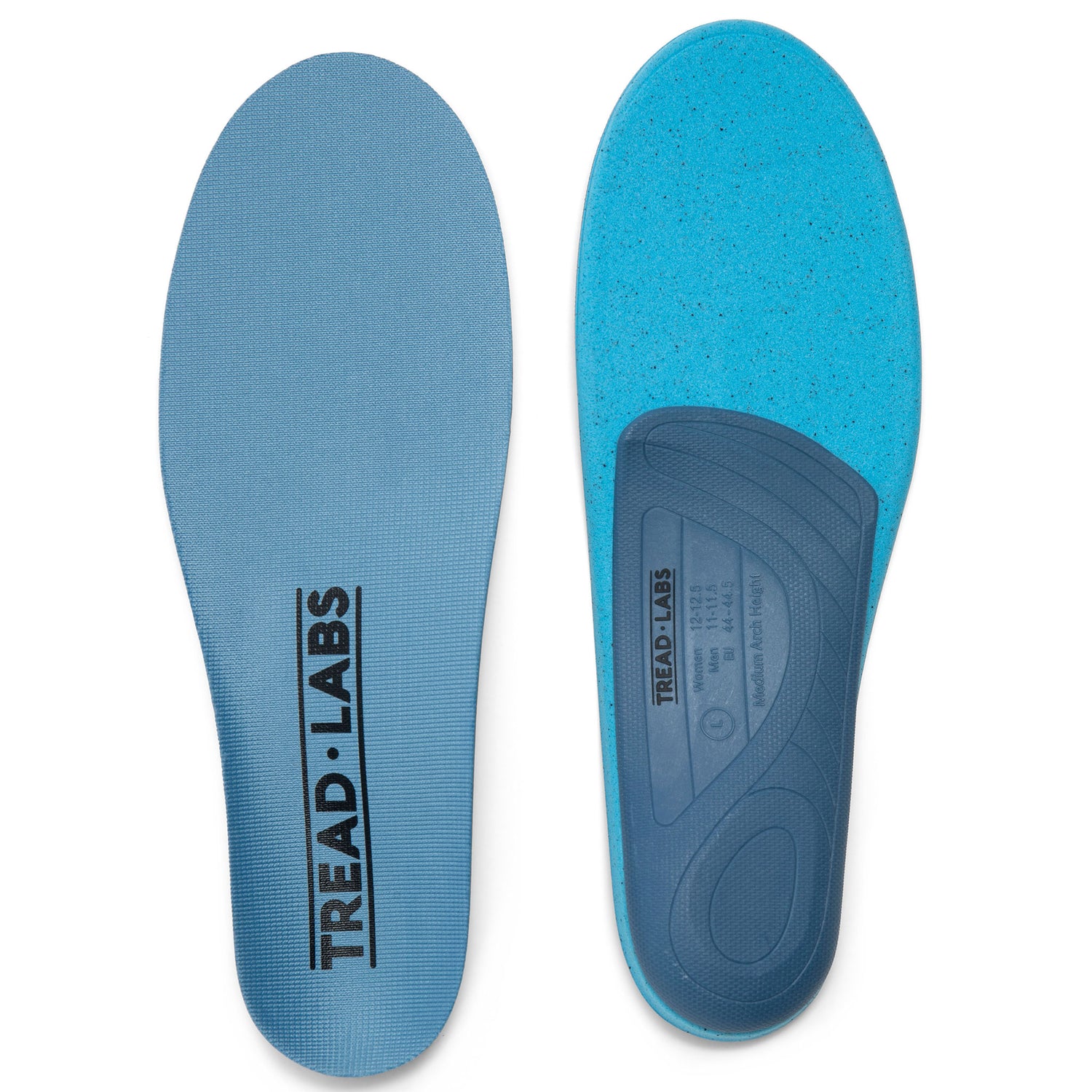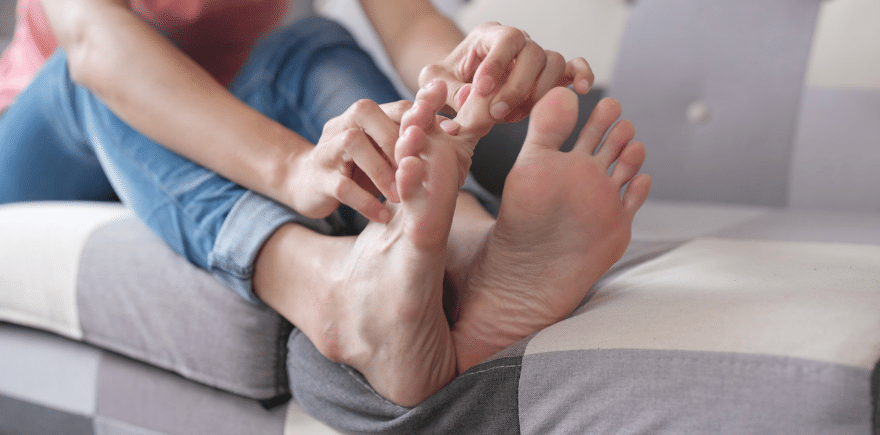
Ever notice that your second toe is longer than your big toe? If so, you're probably wondering if there's something you should be doing about it and if you need to be concerned. The short answers? Yes and no.
The Basics:
If your second toe is longer than your big toe, you're in good company. One in five people have Morton's Toe, as it is called, and while it's no cause for alarm, it can lead to biomechanical problems that result in forefoot pain, plantar fasciitis and stress fractures.
Issues related to Morton's Toe can be avoided with a metatarsal pads - a simple treatment that aligns your foot and relieves pressure that can lead to progressive skeletal dysfunction.
Where you position metatarsal pads is critical. Putting them in the wrong place can make foot pain worse. Find metatarsal pads that can be easily adjusted so you can get the right fit.
Tread Labs is the only insole with modular met pads. Metatarsal pads come in three sizes and attach to any Tread Labs insole. We recommend Ramble or Pace insoles for people with Morton's Toe.
Table of contents
What Is Morton’s Toe?

Morton's Toe is when you have a longer second toe than your big toe. It results in an uneven distribution of pressure across your feet when you walk. This common occurrence can increase the chance of calluses forming on the sole of the foot for some people.
This uneven distribution of pressure causes added weight to shift to your second toe, or metatarsal. Over time, this can lead to an overpronation (turning inward) of your foot, along with other progressive structure irregularities in your foot, ankle, knee, leg, and back.
Unlike many other foot problems, Morton's Toe is not caused by ill-fitting footwear, injuries or overuse. It's actually an inherited trait that you're born with. It affects about 15% of the population.
How Do You Know If You Have Morton’s Toe?
It's easy to tell if you have Morton’s Toe. Just look at your feet see whether your second toe is longer than your big toe. If so, you've got Morton's Toe.
While there's no cause for alarm, you should be aware of biomechanical complications that can arise as you age. They're caused by an uneven distribution of pressure on the ball of your foot.
This pressure imbalance occurs because the metatarsal (ball of the foot) beneath your second toe falls lower than the big toe metatarsal, which creates a deeper space between the first and second toe than between the subsequent toes.

Common Complications Of Morton’s Toe In The Feet
Complications from Morton's Toe can vary because they depend on the length of the second toe in relation to the big toe, particularly when it comes to stress fractures resulting from Morton's Toe.
As Dr. Charis Eng of the Cleveland Clinic explains, "Some people just have a teeny-weeny Morton's toe, so the longer the toe, obviously, you can see where the stress lines are completely different in your legs" Dr. Eng continued, "Those are the people who would have a higher likelihood of getting stress fractures."
In addition to stress fractures, other complications from Morton's Toe include:
- Overpronation (turning inward) of foot
- Pain in the metatarsal area (ball of foot)
- Hammer toe, claw toe, and mallet toe
- Plantar fasciitis (pain in the heel or arch caused by overpronation)
- Bunions (bony protrusions) and Calluses (rough, thick skin patches)
- Morton’s neuroma (sensation of standing on a pebble or sharp object at the ball of the foot)
Because it changes your posture and the way you walk, Morton's Toe can lead to low back, shoulder and neck pain. That's why Dr. Eng recommends low-impact sports like swimming or biking for people with Morton's toe.

What Should You Do If You Have Morton’s Toe?
First and foremost, if you have Morton's Toe, your footwear should fit properly. While ill-fitting footwear is not a cause of Morton's Toe, it can exacerbate some of the associated complications. According to foot.com, the best footwear for people with Morton's Toe has a high and wide toe box. You might need to buy shoes a half size to a size larger to accommodate your second toe.
To relieve the pressure imbalance caused by Morton's Toe that can lead to bigger problems, you can add insoles to your footwear. An orthopedic insert that raises the level of the big toe metatarsal to the level of the second metatarsal will relieve the pressure that causes foot pain and properly align your foot.
Can Metatarsal Pads Help Morton's Toe?
Metatarsal pads are an easy way to relieve Morton's Toe pain because they add support to the shaft of your second metatarsal bone, reducing the pressure on the ball of your foot and re-distributing it more evenly.
The key to making it work is having the metatarsal pad in the right spot. If metatarsal pads are not positioned correctly, they will make things worse, and placing them can take some trial and error. There are many types of met pads available with various ways of staying in place:
- Sticking to the bottom of your foot - Adhesive can sometimes irritate the skin so this isn't ideal. Also, it's inconvenient to place a met pad on the bottom of your foot everyday.
- Sticking to the top of your insole - While it's better than sticking a met pad to the bottom of your foot, it's not great for allowing the met pad to be adjusted as needed as you'll wear out the stickiness of the adhesive. Additionally, the met pad can peel off inadvertently as you put your shoes on or take them off.
- Velcroing underneath your insole - This method is best because the velcro doesn't lose its grip so you can adjust as often as needed. Also, the met pad is protected from your foot and any dirt and bacteria that might come along with it.
Tread Labs insoles two-part system give you the ability to place a hook-and-loop backed metatarsal pad between the arch support and top cover, allowing for easy adjustment to get the placement right. And the top cover protects the met pad from dirt and bacteria, making it last longer.
Should You See A Doctor For Morton’s Toe?
If you are experiencing pain due to Morton’s Toe, it's time to see a doctor who will examine your foot, ankle, and leg as you sit, stand, and walk. If there is evidence of a metatarsal fracture or progressive foot dysfunction, they may wish to perform imaging tests to see what’s going on at the bone, muscle, and tendon level.
If the findings suggest the root of your foot dysfunction is due to Morton’s Toe, your physician will likely suggest the proper type of shoe inserts to help you.
If your Morton’s Toe has contributed to other skeletal problems, your physician may refer you to a specialist who can address the specific issues you are experiencing.
- Podiatrist (Doctor of Podiatric Medicine)—physician who treats foot and ankle disorders
- Orthopedic (Foot and ankle) surgeon—a surgeon who specializes in the surgical treatment of foot and ankle problems
- Certified Pedorthist—specialist who has expertise in fitting and modifying footwear to address foot irregularities and conditions
- Certified Orthotist – provides mechanical devices that address foot and leg or gait irregularities
- Chiropractor – a spine practitioner and expert of the musculoskeletal system who can make adjustments in the skeletal structure and provide nerve relief or stimulation, as needed
- Osteopath – a physician or surgeon who specializes in correcting problems and injuries of the bones, tendons, and muscles
- Pain specialist—a physician who specializes in helping patients to remediate and cope with their pain using a variety of therapies, including injections, physical therapy, and oral pain medications
- Doctor (PhD) of Kinesiology—an expert in the study of motion and its effects on physical health; may also work as a physical trainer, occupational therapist, or physiologist
It's always best to seek the advice of a medical practitioner when you are experiencing pain or discomfort. They will help you determine the cause of your issues and point you in the right direction toward solving them so you can walk better, feel better, live better.
Questions? Drop us a line at hello@treadlabs.com. We're here to help.


